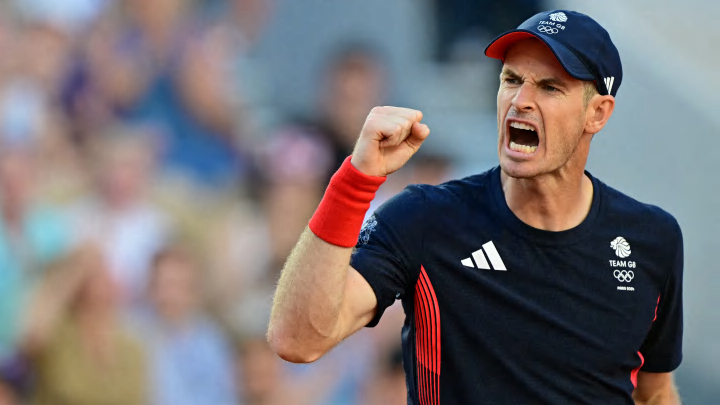An Ode to the Storied Career of Andy Murray

I’ll never forget the moment Andy Murray won his long-awaited Wimbledon title in July 2013. I was standing in my grandparents’ living room sporting a shirt emblazoned with the British flag. I had just gotten my first smartphone for my 15th birthday a week prior, and I decided to document the moment Murray won the tournament, recording the TV screen on my phone.
This historic occasion happened way before I had Twitter, and before Instagram and Facebook were known for posting sports highlights like we see now. Sure, there was YouTube, but I was worried I wouldn’t get to relive this significant win again if I didn’t record it on my phone.
I kept restarting my recording as Murray went from being up 40–0 in the final game against Novak Djokovic, to taking the game to four deuces before he would eventually win the title. It took over 13 minutes for the final game to end.
Each year Murray entered Wimbledon, all eyes were set on him. British tennis fans wanted the Wimbledon drought to end, and Murray seemed to be their best shot. He lost in the 2012 Wimbledon final to Roger Federer (who defeated him in three major finals) but fans could feel the win coming. In 2013, Murray broke the streak, making him one of the most famous British athletes in modern times.
As Murray dropped his racket, I—and millions of other tennis fans—descended into tears. The 77-year drought of a British man winning Wimbledon was over. I had never felt that sort of emotion and excitement for an athlete before, and from then on, I knew I would follow Murray for the rest of his career.
After that 2013 Wimbledon win, I tried to watch every Murray match I could. (Thankfully our cable package included the Tennis Channel.) If he played at 6 a.m. in a major tournament, I would wake up for it and I recorded matches I couldn’t watch live.
And now, the day has come for his run to end. Murray announced ahead of the 2024 Olympics that the Paris Games would mark his final professional tennis tournament. He already played his last singles match, though, as he withdrew from the Olympic men’s singles draw, instead competing in the men’s doubles tournament alongside Dan Evans. After a few “almost” retirements, Murray is officially hanging up his racket for the last time.
He didn’t go out without a fight though, as Murray was nearly eliminated from the first two rounds of the men’s doubles tournament. Murray and Evans were down 9–4 in a 10-point tiebreak to Japan’s Kei Nishikori and Taro Daniel in the first round, but the British duo then won seven points in a row to win the match. A similar situation happened in the second round when Belgium’s Sander Gille and Joran Vliegen took Murray and Evans to another tiebreak in the final set. Murray and Evans somehow managed to hold them off and win 11–9. The British duo’s Olympic run came to an end Thursday when they lost in a two-set match to Americans Taylor Fritz and Tommy Paul. They attempted to come back in the second set, but they fell short. Murray walked off Court Suzanne Lenglen in tears.
The Olympics is a fitting stage for Murray’s farewell, as his first big tennis achievement came at the 2012 London Games when he won his first of two gold medals in men’s singles. Murray went on to capture his first major title at the U.S. Open the following month, and his stardom ricocheted from there. I first began following Murray that year. Growing up playing tennis, I wanted a role model as I started my high school career.
When I began private tennis lessons in high school, my coach asked during my first lesson who my favorite tennis player was. I promptly replied Murray. My coach then taught me some of Murray’s skills and techniques. I wasn’t planning to go professional or anything, but as a young tennis player, it was special to mimic the playing style of the athlete I admired most.
After following Murray for over a decade, the news of his retirement hit me hard, even though I knew it was inevitable. I thought the 2019 season was going to be his last after he emotionally told the media at his Australian Open news conference that he couldn’t keep playing as the “pain is too much” from his two hip surgeries. He ended up defying the odds that year by winning Antwerp in October, and then he decided to keep going until his body wouldn’t let him push any further.
By 2024, fans knew it was probably time for him to finish out his career. Multiple injuries caused him to withdraw from tournaments, including the Wimbledon men’s singles draw. He played men’s doubles with his brother Jamie, though, losing in the first round. The tournament held a retirement ceremony for Murray after the match, showcasing an emotional video. Some of the most famous tennis figures stood on the side of the court and watched alongside Murray. His Wimbledon career was officially over.
You made us dream.
— Wimbledon (@Wimbledon) July 4, 2024
You made us believe.
You made us cry.
And you made us proud. pic.twitter.com/yNsnkEsEhc
Murray finishes his career with 46 ATP titles, including three major titles, one ATP Final title and two Olympic gold medals.
Murray is often considered the final men’s player in the Big Four alongside Federer, Djokovic and Rafael Nadal. This generation of men’s tennis is slowly coming to an end, though, as Federer retired in 2022 and Nadal’s retirement seems imminent. Djokovic doesn’t show signs of letting up anytime soon, but at age 37, he probably doesn’t have too many years left in the tank.
Men’s tennis will look a lot different in the next few years and beyond. But, as I sit and reflect on the last two decades of the sport, I’m lucky that I got to watch some of the best matches in men’s tennis history.
I want to thank Murray for getting me hooked on the sport. If I hadn’t chosen to follow him as a fan back in 2012, it’s possible I might not be writing this today. My love for sports only blossomed at that age, and following tennis and Murray truly helped grow my passion. I am sad I never got to see Murray play in person before his retirement, but I am excited to see what’s next. I have no doubt that this isn’t the last the tennis world will see of Murray.
